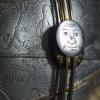Identifying shock spring for an FEF
-
Recently Browsing
- No registered users viewing this page.
-
Topics
-
Posts
-
By Neverenoughwatches · Posted
Making a stud pin for a pocketwatch from 1mm copper wire, softer than brass but it will do the job. The lathe cost 3 pound including the chuck, powered from an old electric shaver adapter. -
By LittleWatchShop · Posted
Demagnetizers work on the principle of a decaying magnetic field. Whether the expensive Elma or the cheap Chinese...same principle. For the cheap ones, you are decaying the magnetic field manually by drawing the watch away from the demagnetizer while it is energized. The Elma (and others) generates a decaying magnetic field electronically so you don't have to do the work. If you use the cheap ones properly, they will do the job. I prefer the Elma style...but that is just me. -
I also still use my cheap first set of screwdrivers. I replaced the blades of the smallest (0.6mm) with higher quality once I had bent a few of the originals, but beyond that I have been fine. Note though that I do not work on any remotely valuable watches and most of what I deal with are in a truly terrible state, watches that have been banging around in kitchen drawers or toolboxes. So my concern for screw head slot integrity and scratches is usually not very high. As for a loupe - you won't need anything powerful for an ST36 that is new. You don't need to do close inspection of balance pivots because they will not be worn out, and a 3x or 5x loupe is perfectly sufficient to see the oiling. I don't have any microscope or powerful magnification of any sort. I just use cheap loupes. But again this would be different if I were working with more valuable watches. And if I had equipment to burnish pivots, then I would get a microscope to check my work.
-
By Neverenoughwatches · Posted
I've recently switched over to using a x2.5 -x3 eyeglass for disassembly and some larger part assembly. It's interesting to see how accustomed and trained your eyes become to that way of working after using a microscope for years. And pick up and work at eyelevel when possible. Personally I would stick with and learn to use regular oilers efficiently.
-




.thumb.jpg.19a9c4ff164d78d516aa9f05a063752b.jpg)



Recommended Posts